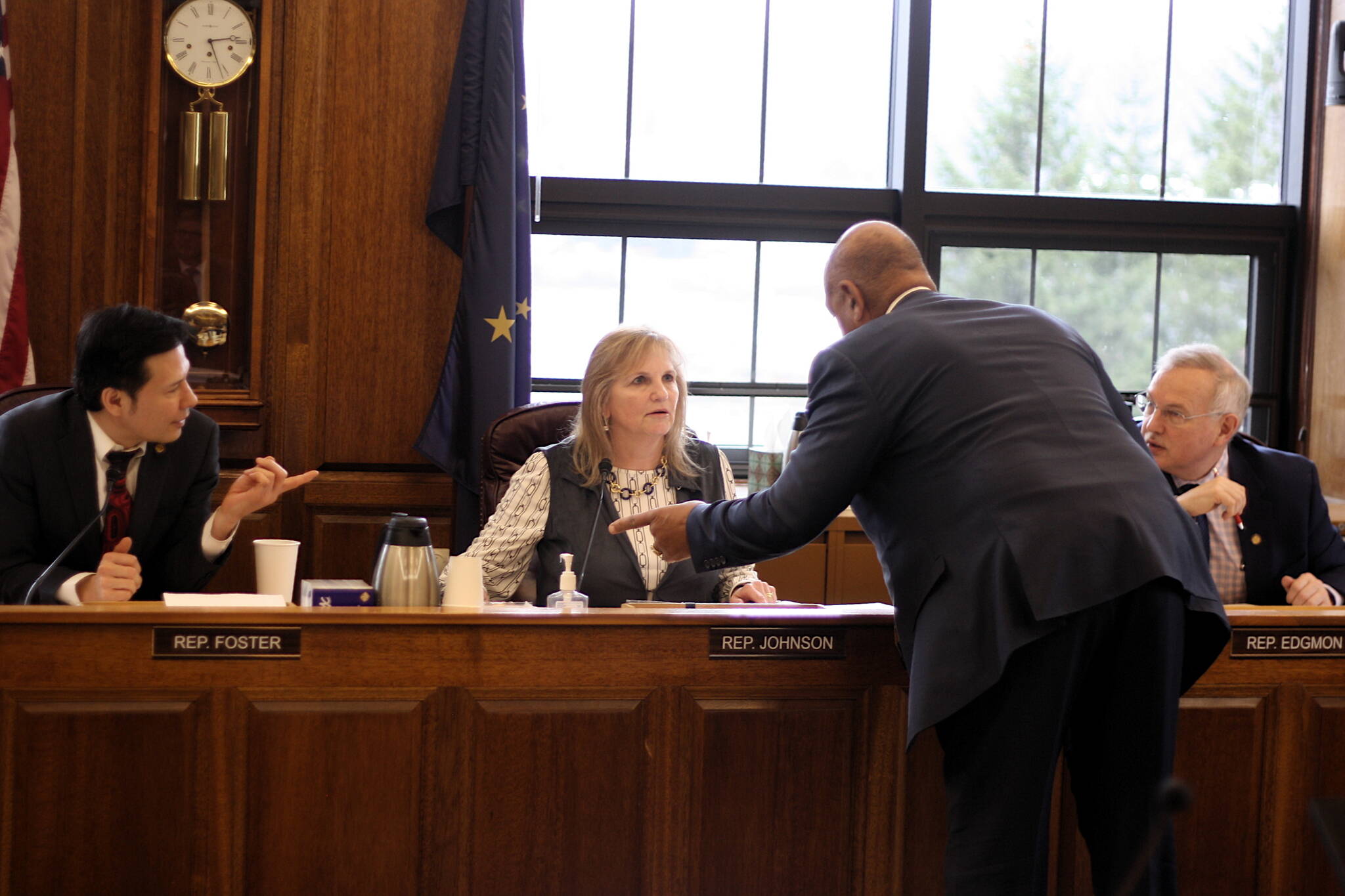A Permanent Fund dividend of $2,689 instead of $3,860 is — for now — the most notable change in the state House’s proposed budget for next year compared to Gov. Mike Dunleavy’s pitched spending plan, but what’s expected to be a grim revenue forecast on Wednesday may mean more spending cuts are ahead.
The draft of the House’s revised budget, following weeks of subcommittee meetings, was presented Monday to the House Finance Committee as it began a week of public hearings on the spending plan for the 2024 Fiscal Year that begins July 1. Residents from small Southeast Alaska communities are being invited to testify Tuesday afternoon and residents of Juneau from 5-8 p.m. Tuesday.
“Over the next few weeks will have robust discussions on issues like education, the PFD, health and social services, and other major cost drivers to Alaskans,” said Rep. DeLena Johnson, a Palmer Republican who co-chairs the House Finance Committee. “The (House budget) reflects good starting point…Highlighted by the downswing in oil, Alaska needs a good fiscal solution to deliver the certainty all Alaskans deserve.”
The decision to adapt a lower PFD in the House budget is due to an estimated $400 million deficit in Dunleavy’s budget, which may become significantly higher when the revenue forecast is issued, Johnson said. She said the House budget currently does not have a deficit, but that may change due to oil prices that have been lower than expected so far this year.
“As we receive the spring forecast we will have to evaluate multiple portions of the budget and see what gets done,” she said. “It may be there needs to be some spending cuts. There may be a (budget reserve fund) draw. We’ll see what we have to do.”
The PFD in the House budget is calculated according to a so-called 50-50 formula that divides spending from Permanent Fund earnings evenly between dividends and state programs. Dunleavy’s budget proposes a dividend based on the formula in the original 1982 statute.
The rest of the operating budget is largely unchanged from Dunleavy’s revised draft submitted in February. It contains no increase in the per-student education funding formula, for instance, which is a declared top priority of the bipartisan Senate majority as well as the House minority caucus whose votes will be needed to access reserve funds if they are needed to balance the budget.
Oil prices need to average about $87 during the fiscal year for the state to break even. The price on Friday was just below $71 a barrel, far below a peak of about $120 last spring after Russia began its invasion of Ukraine, and some forecasters are predicting further price drops during the coming months.
The spring oil revenue forecast will be presented by top Department of Revenue officials to the Senate Finance Committee at 9 a.m. Wednesday and to the House Finance Committee at 1:30 p.m. the same day. Both hearings will be available live at Gavel Alaska and the official Alaska State Legislature website.
• Contact reporter Mark Sabbatini at mark.sabbatini@juneauempire.com

